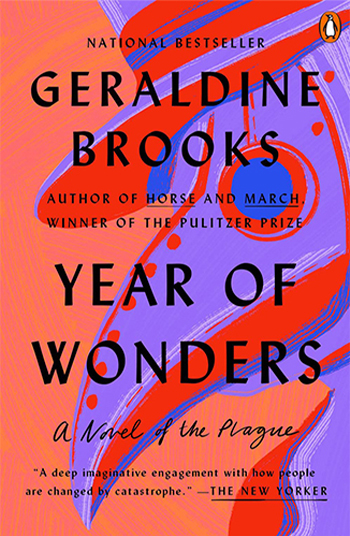 Year of Wonders: A Novel of the Plague
Year of Wonders: A Novel of the Plague
Geraldine Brooks
In 1665, a tailor in the village of Eyam, in England, opened a bundle of cloth from London. It had fleas, and they carried bubonic plague, and soon the villagers were dying. The village made an unusual decision—they quarantined, to prevent the spread of the disease outside their borders, and they rode out the plague in isolation from the outside world. This true story is related in wrenching and beautiful fictionalized detail by Geraldine Brooks, in her book Year of Wonders (which, incidentally, is on the American Library Association’s list of the top 100 banned books in the United States).
In the novel, we meet 18-year-old widow Anna Frith, a servant to the local church rector. Anna soon loses her two sons to the plague, and is drawn into the center of the community’s life in isolation as she cares for the sick and dying alongside the rector’s wife. The village turns in on itself, and Brooks explores the ways in which this plays out for good and evil, with sensitive and compelling detail about rural life and relationships in 17th century England. She also makes sure we root for Anna, who questions everything she has been taught to think about religion and nature, and who blossoms into a woman of strength and substance.
The parallels to today’s world and how it has faced COVID are clear, and many articles (such as this article from The Guardian) connecting Eyam’s experience to COVID can be found online. In each case, the role of community is central—to how we weather storms, and how we heal after loss.
ANN GLUSKER
Sociology, Demography, & Quantitative Research Librarian
Doe Library
This book is part of the 2022 Berkeley Summer Reading List. Stay tuned for more weekly posts!